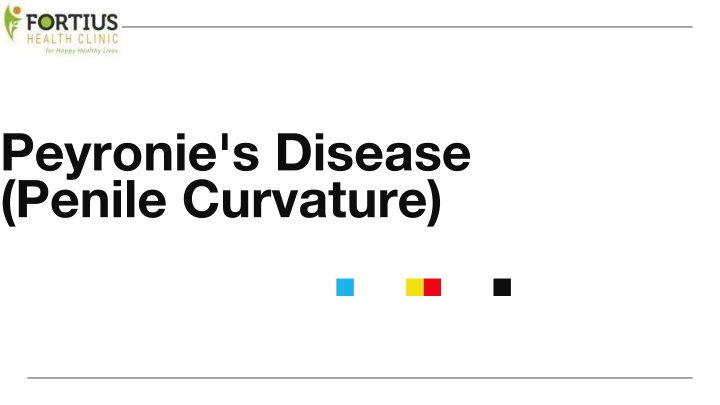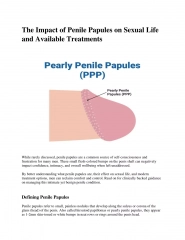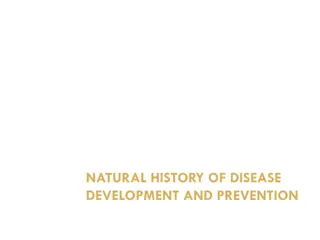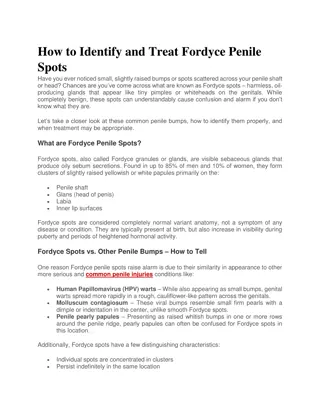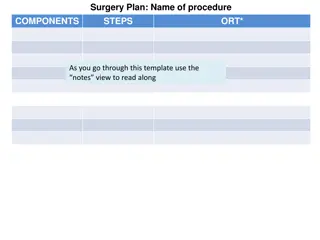Peyronie's Disease (Penile Curvature)
Peyronieu2019s disease is also called as penile curvature disease that makes curved penis which causes anxiety, stress and pain during erection. For more info visit: // /blog/peyronies-disease-symptoms-causes-and-treatments/
Download Presentation

Please find below an Image/Link to download the presentation.
The content on the website is provided AS IS for your information and personal use only. It may not be sold, licensed, or shared on other websites without obtaining consent from the author.If you encounter any issues during the download, it is possible that the publisher has removed the file from their server.
You are allowed to download the files provided on this website for personal or commercial use, subject to the condition that they are used lawfully. All files are the property of their respective owners.
The content on the website is provided AS IS for your information and personal use only. It may not be sold, licensed, or shared on other websites without obtaining consent from the author.
E N D
Presentation Transcript
Peyronie's Disease (Penile Curvature)
Introduction to Peyronie's Disease Peyronie s disease is a condition characterized by the formation of fibrous scar tissue, or plaques, under the skin of the penis, leading to a noticeable curvature during erections. It affects approximately 1 in 10 men, making it a relatively Peyronie s disease common urological issue. Beyond physical symptoms, Peyronie s disease can significantly impact men's emotional well-being and sexual health, contributing to conditions such as erectile dysfunction and emotional distress, which can strain personal relationships and self-esteem.
Symptoms of Peyronie's Disease Penile Curvature Penile Pain Erectile Dysfunction The most noticeable symptom is an unusual curve of the penis during an erection, which can vary in direction and severity. Many individuals experience pain during erections, which can range from mild discomfort to severe throbbing. Scar tissue can disrupt normal erection mechanics, leading to difficulties in achieving or maintaining an erection. erection Penile Shortening Emotional Distress Penile Deformity Peyronie's disease may cause a noticeable reduction in penis size, particularly when erect, due to scar tissue. Physical symptoms can lead to psychological issues, including anxiety and depression, affecting self-esteem and relationships. In addition to curvature, abnormalities may include indentations or constriction during an erection due to fibrous plaques. penis size
Causes of Peyronie's Disease Trauma or Injury Genetics Abnormal Healing Response Penile trauma, whether acute or chronic, often initiates Peyronie's disease by causing localized inflammation and aberrant scar tissue formation. Research suggests a genetic predisposition may influence the likelihood of developing Peyronie's disease, particularly in those prone to abnormal scar tissue. Men with Peyronie's disease may experience dysregulated healing processes, leading to excessive collagen deposition and plaque formation. Connective Tissue Disorders Inflammation in the Penis Age and Hormonal Factors Certain connective tissue disorders, such as Dupuytren s contracture, increase the risk of developing scar tissue in the penis. Inflammation, driven by injury or other triggers, initiates the fibrotic process, resulting in plaque formation within the penile tissue. Men over 40 are more commonly affected, but increasing reports in younger men suggest hormonal imbalances may also play a role.
Self-Healing Possibilities Peyronie s disease can heal on its own in approximately 13% of men within 6 to 15 months. This spontaneous resolution may occur as the scar tissue is naturally absorbed by the body. Factors influencing self-healing include the extent of the plaque formation, the severity of symptoms, and individual healing responses. However, many cases remain persistent, necessitating medical intervention for effective treatment.
Diagnosis of Peyronie's Disease Medical History Review The diagnosis begins with a thorough review of the patient's medical history, including any previous penile trauma, surgical history, and family history of Peyronie's disease. Physical Examination A physical examination is conducted to assess penile curvature, identify any palpable plaques, and evaluate erectile function through various tests. Imaging Tests Imaging tests such as ultrasounds may be utilized to visualize the plaque location and size, aiding in assessing the severity of the condition.
Treatment Options Medications Oral medications like collagenase (Xiaflex), pentoxifylline, and calcium channel blockers may be prescribed to reduce plaque size or alleviate symptoms. Surgery In severe cases, surgical options such as plaque incision/excision, penile implants, or grafting may be necessary to correct curvature and restore function. Shockwave Therapy High-energy shockwave therapy is used to enhance blood flow and break down plaque, but results have been limited and are considered controversial. Injections Collagenase injections can be administered directly into plaques to help break down scar tissue and improve curvature.
Home Remedies for Curvature Gentle Stretching Exercises Penile Traction Therapy Vitamin E and Herbal Supplements Regular gentle stretching can Using a penile traction device Some studies suggest that vitamin E improve flexibility and may help in applies consistent, gentle pressure and supplements like CoQ10 may gradually reducing the curvature. to the penis, potentially reduce plaque buildup associated Stretching the penis in the opposite straightening it over time. Many men with Peyronie s disease. Consult a direction of the curve for a few have reported gradual healthcare provider before starting minutes daily is recommended. improvements with proper use. any new supplements.
Key Takeaways and FAQs Key Takeaways Frequently Asked Questions Peyronie's disease affects 1 in 10 men, causing penile curvature and pain. Peyronie's disease can affect perceived size due to curvature and scar tissue. Symptoms include erectile dysfunction, penile shortening, and emotional distress. It is not life-threatening but can impact sexual Pain during erections function and emotional health. Diagnosis is made through medical history and Pain during erections is common and can vary in intensity. Treatment options physical examinations. Treatment options vary from medications to surgery based on severity. Self-treatment options include gentle stretching and traction therapy, but professional guidance is essential.
FOR MORE INFO VISIT OUR : Website - https://www.fortiushealthclinic.com/ Instagram - https://www.instagram.com/fortiushealthclinicblr/ LinkedIn - https://www.linkedin.com/in/fortius-health-clinic-4530b6254/ Facebook - https://www.facebook.com/fortiushealthclinic Thank you.
